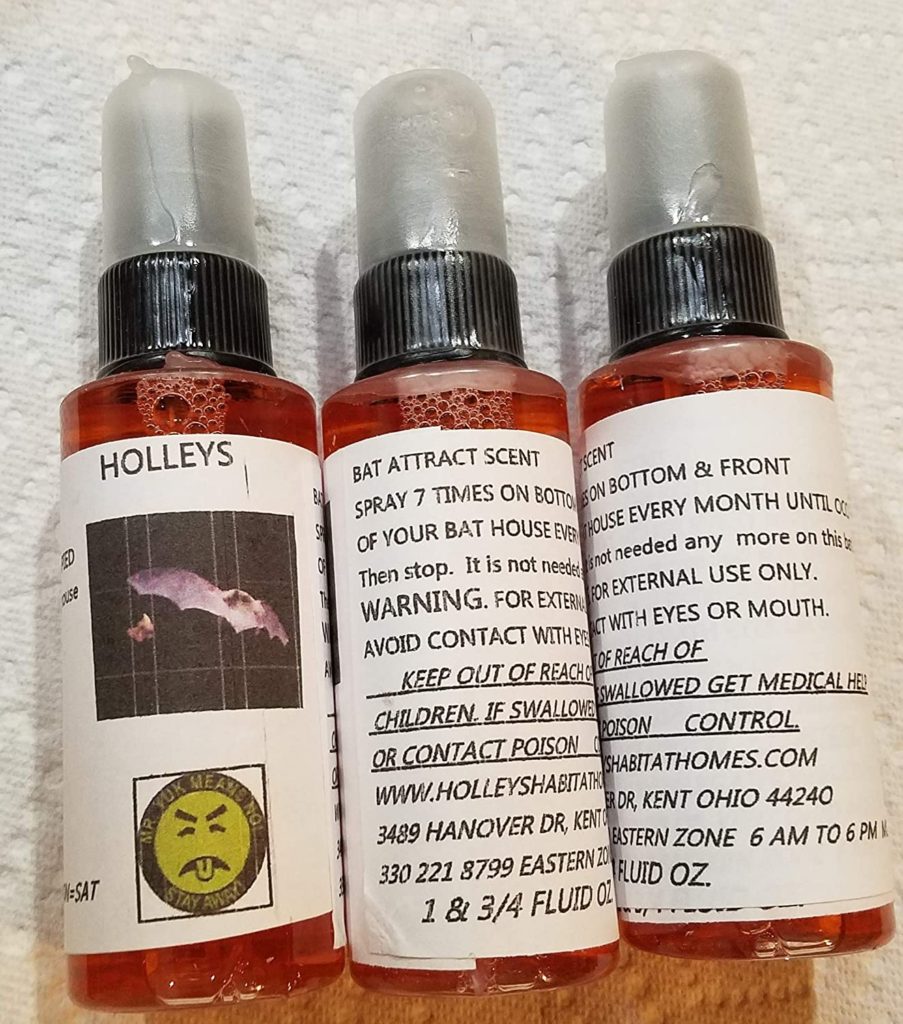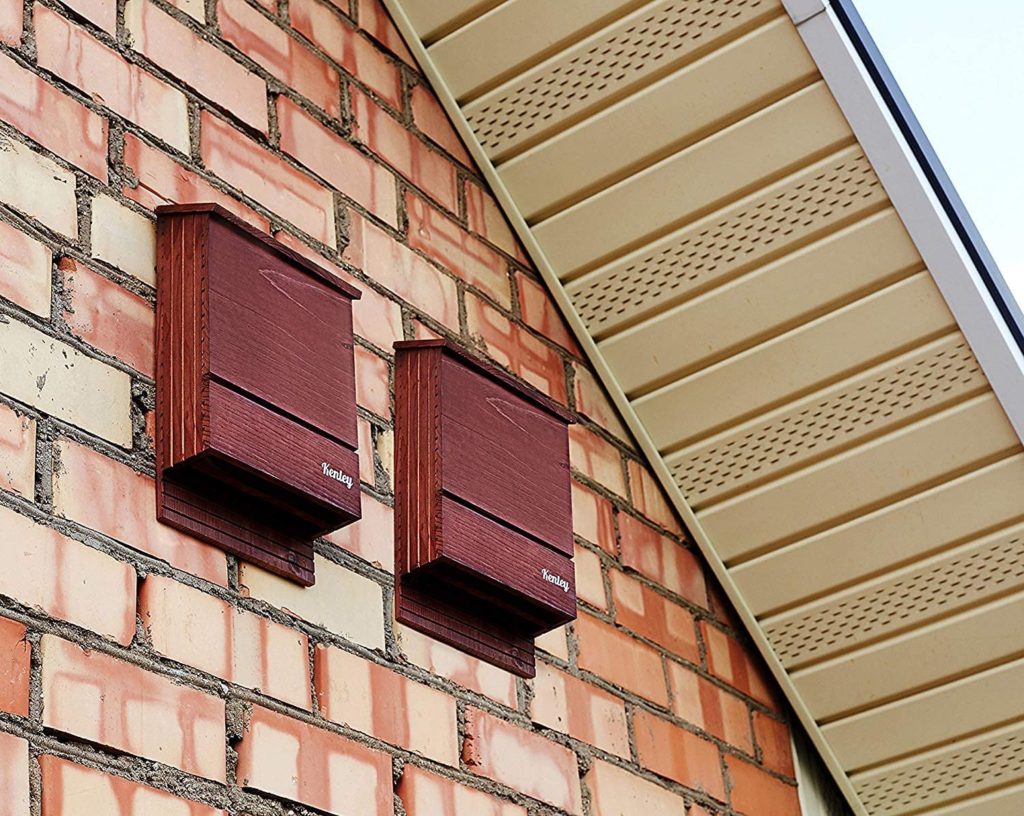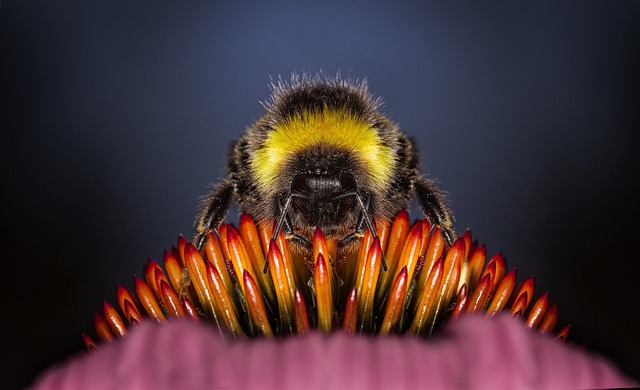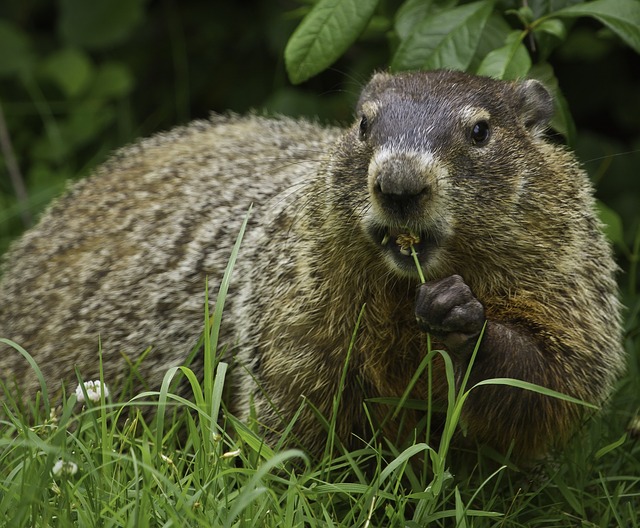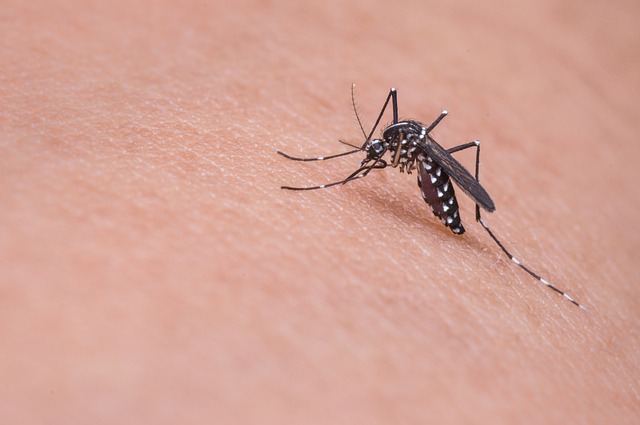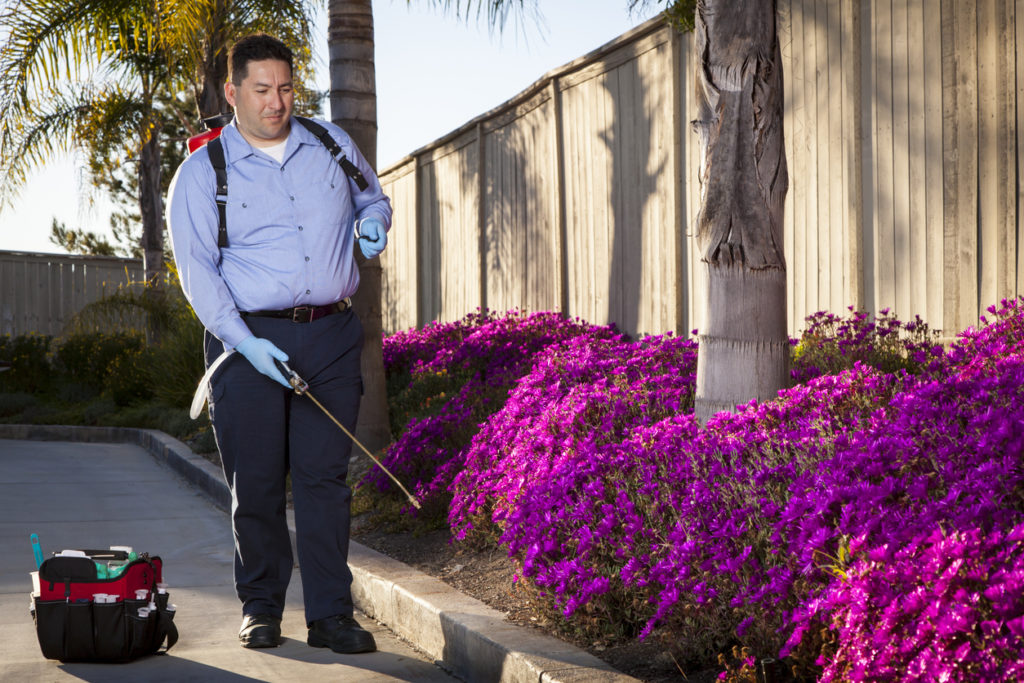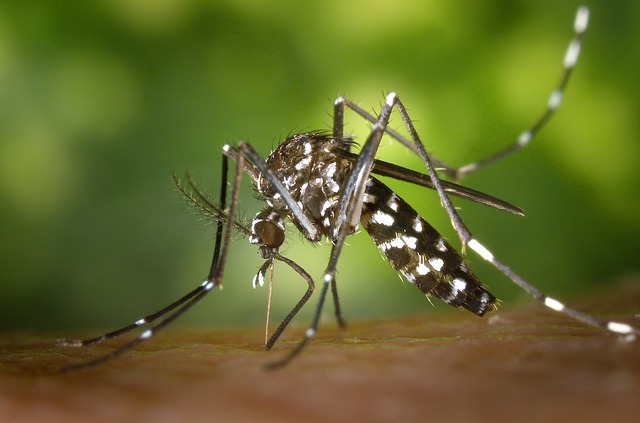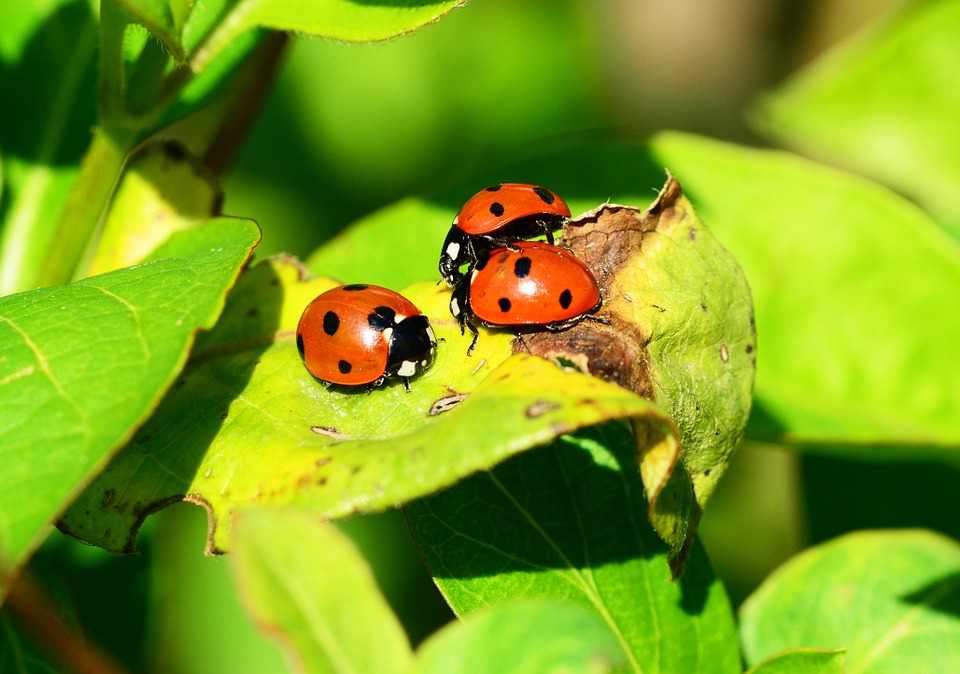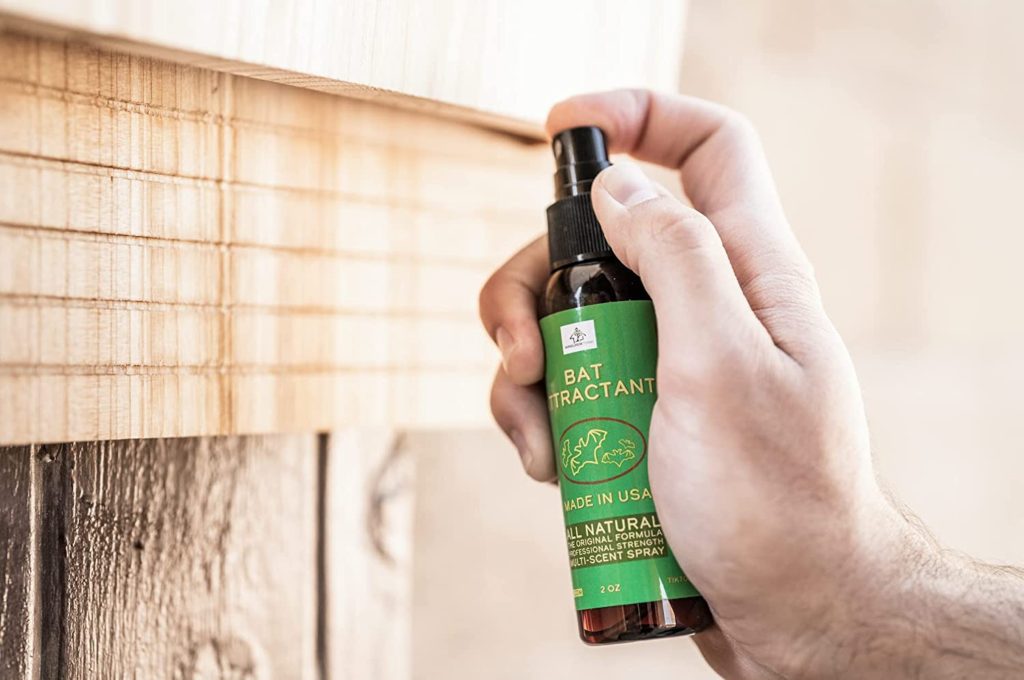
Purchasing a bat house is easy, however, having a colony of bats take up residence inside it is sometimes another story. To tip the odds in your favor using bat attractant can help. Here’s what you’ll want to know when considering using it.
Bat House Benefits
Having a bat house that’s full of bats can have many advantages. Bats can help to put a huge dent in your mosquito population as they each are capable of gobbling up around a thousand of these backyard pests per hour.
And of course, don’t forget the grade-A guano (bat poop) fertilizer for your garden. Even with the right placement, however, it’s not uncommon to have to wait a year, two, or even three before they move in and you can enjoy these bat house benefits among others.
Bat House Placement Comes First
No amount of bat attractant will work if you don’t have your bat house in the right location. So before you start spraying it with any scents you need to know where to put a bat house first. Bats like to roost near a freshwater source, and that typically means within a quarter of a mile at the most. (Man-made alternatives such as birdbaths can be used as a substitute.)
Your bat house should also be installed in a spot that gets daily direct exposure to the sun. Facing an eastern or southeastern orientation can help with this since it keeps the temperature in the house high which is what bats prefer. You’ll also want to make sure the house is at least ten feet off the ground or higher and doesn’t have any obstructions such as branches near the entrance so the bats can enter and exit easily and safely.
Bat House Attractant Basics
Studies show that bats are very responsive to smells. They also search out spaces where other bats happen to be currently roosting. A bat attractant helps you use these natural traits to your advantage. The goal of an attractant is to get the bats to investigate your bat house. And if you have placed it in a location that creates the conditions they like, then hopefully they will move in.
Because bats have a sensitive sense of smell many bat house owners will fill their new bat house with damp soil before using it. By leaving soil inside the house for a few days and then dumping it out, it can help to get rid of the new bat house smell which bats tend to avoid. Another simple action which can help too is to simply let your house air out and weather a bit outdoors for a period of time before installing it and using your attractant.
Bat Attractant Options
When choosing an attractant you have a couple of different types to pick from. Some consist of a paste made from actual guano which of course can be very convincing to a bat’s nose that bats have been using your bat house. If you have an active roost on your property or know someone who does, you may want to make your own homemade bat attractant.
To do so you’ll need to collect about a cup of guano and then mix it with water. Once it has a paste-like consistency you can pour it into your bat house which will allow it to really soak in. This method is not for the squeamish and you’ll want to wear a paper filter mask and rubber gloves when doing so for safety. Luckily you don’t have to use guano at all in order to attract bats to your yard and bat house.
There are also sprays that smell like bat pheromones. Ammonia sprays are another choice as well, and these mimic the smell of bat urine since that is one of the chemicals that it naturally contains. These two types of sprays are typically the most popular since you won’t have to deal with any bat poop, possible bacteria, or mess.
When To Use A Bat Attractant
Oftentimes, people will install their bat house and after a long period of waiting get frustrated when it doesn’t seem to be attracting bats. They will then try an attractant. There’s nothing wrong with doing this but you may end up wasting a lot of time waiting first with nothing to show for it. The easiest way to save time and increase your odds is to use a bat house attractant from the start.
But don’t forget, house placement is critical. The time of year and your location can also play a role. Normally the best months to install a bat house and use your attractant are from January to April. This is when bats come out of hibernation and are looking for their summer-time roost. Of course, you will want to be sure to follow the seller’s instructions for where and how frequently to apply your specific attractant.
Using a bat attractant isn’t foolproof. However, it can definitely help to increase the odds of getting bats into a bat house without a long wait and being able to enjoy the benefits of having them inside as quickly as possible!
Start Shopping for Bat Attractant!
Where To Put A Bat House
Buy on Amazon Where to put a bat house is an important decision. If it’s not in an appropriate spot, you may be putting your resident bats in danger. Or you may end up with an empty house since no bats are interested in living in it. So you’ll need to know a few...
Beneficial Garden Insects And Creatures Often Confused For Pests
There are many animals that we consider to be pests. However, many of them actually perform critical tasks and help to control the populations of much more devastating species. The following beneficial insects and creatures are ones you’ll want to keep around....
The Most Common Backyard Pests
Your backyard is an ecosystem, however, not all of the animals which reside in or near it have the manners you’d like them to. There are many different animals that can be a nuisance. Here are some of the most common backyard pests that you’re likely to encounter....
The Complete Alligator Decoy Guide
Buy on Amazon Trying to keep predators and pests out of your pond or pool can seem like an impossible task. It can be time-consuming, frustrating, and the damage they cause can be costly and messy. With an alligator decoy, you’ll be able to use their instincts against...
How To Keep Mosquitoes Away From Your Outdoor Living space
If you want to enjoy your outdoor living space during the warmer months without getting eaten alive by mosquitoes, then there is work to be done. Read on below to find out exactly how to keep these blood-sucking pests away from your backyard when the temperature heats...
Pest Control Planning-3 Methods That Are Safe For Your Home and Family
Just the thought of dealing with an infestation of insects or rodents can be enough to send homeowners into a panic. Yet at the same time, the idea of spraying dangerous chemicals on your property can also be unsettling. Fortunately, you don't have to compromise your...
4 Natural Ways to Pest-Proof Your Garden and Patio
Summer is fast approaching, which means it's time to plan out all the fun outdoor activities in your garden. Whether that's having a barbecue, starting a vegetable patch, or chilling in an outdoor pool, summer is the perfect time to take advantage of your garden and...
Green Tips for a Green Garden
Unwanted pests and unwanted weeds are always popping up in the garden. These can ruin flowers or other plants around the yard. Instead of using dangerous chemical pesticides as a means of pest control, there are organic alternatives that work just as well. Here are...

